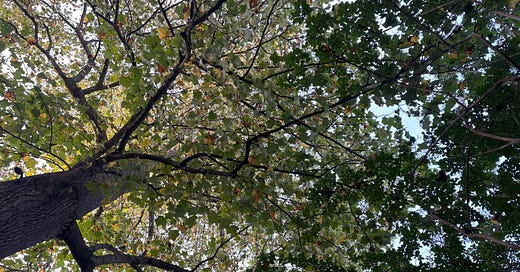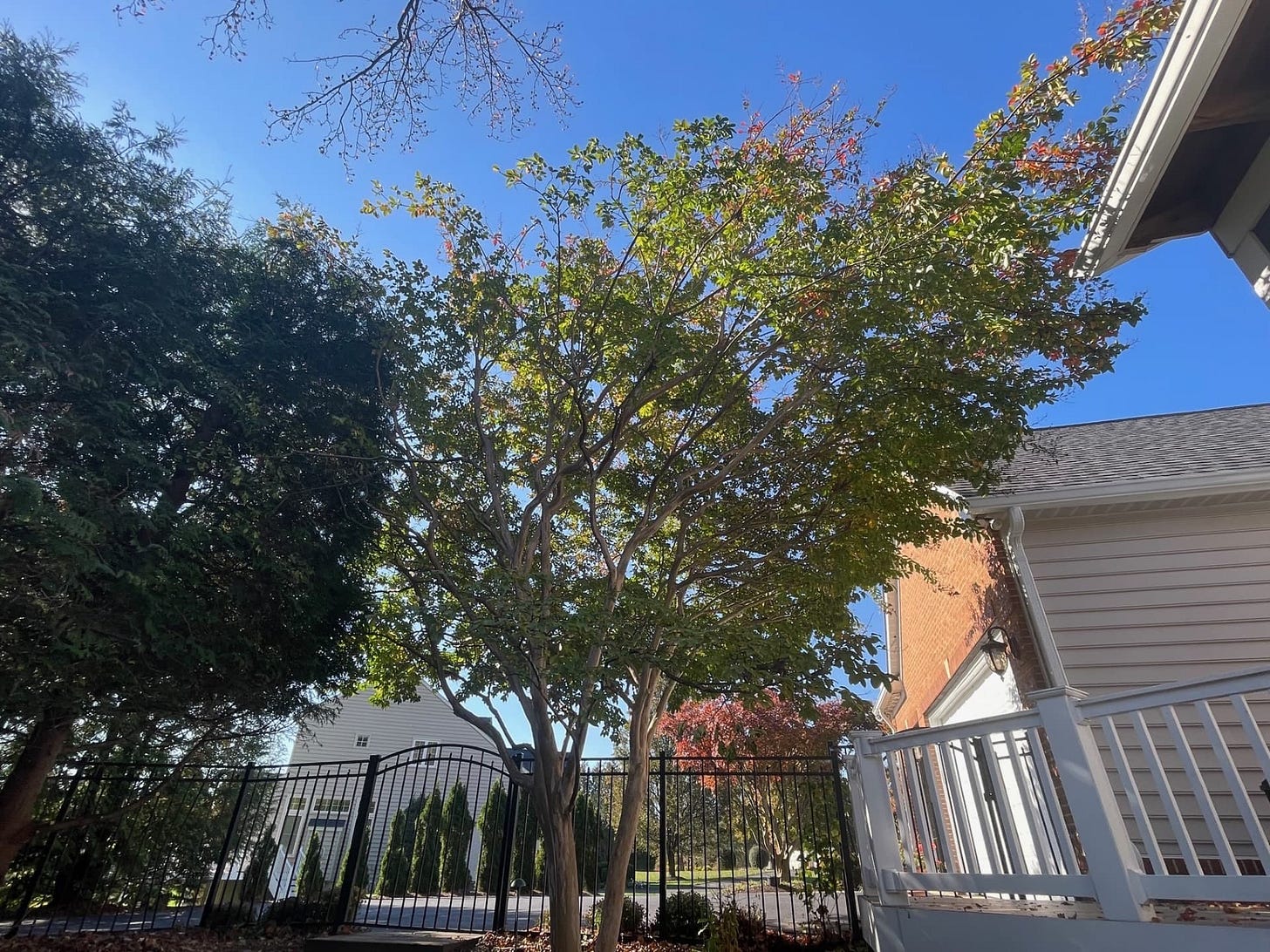The Steps Bed
Here is an exciting opportunity to create perennial artistry and offer a colorful invitation to visitors to my garden, if only I could stop killing the plants.
I’ve always called the plantings on each side of the steps that take you from the driveway down to the back patio, the steps bed. The hardscape, bushes, and trees in this part of the yard were part of the original design by JAMS landscaping in 2006. The trees and the shade they cast have a huge impact on the choice of plants we’ve made on both sides of the steps.
The flagstone steps leading down from the driveway to the patio are another creation of JAMS landscaping. The flagstone and the wood combine to give garden visitors the feeling that they’re descending into a beautiful natural space.
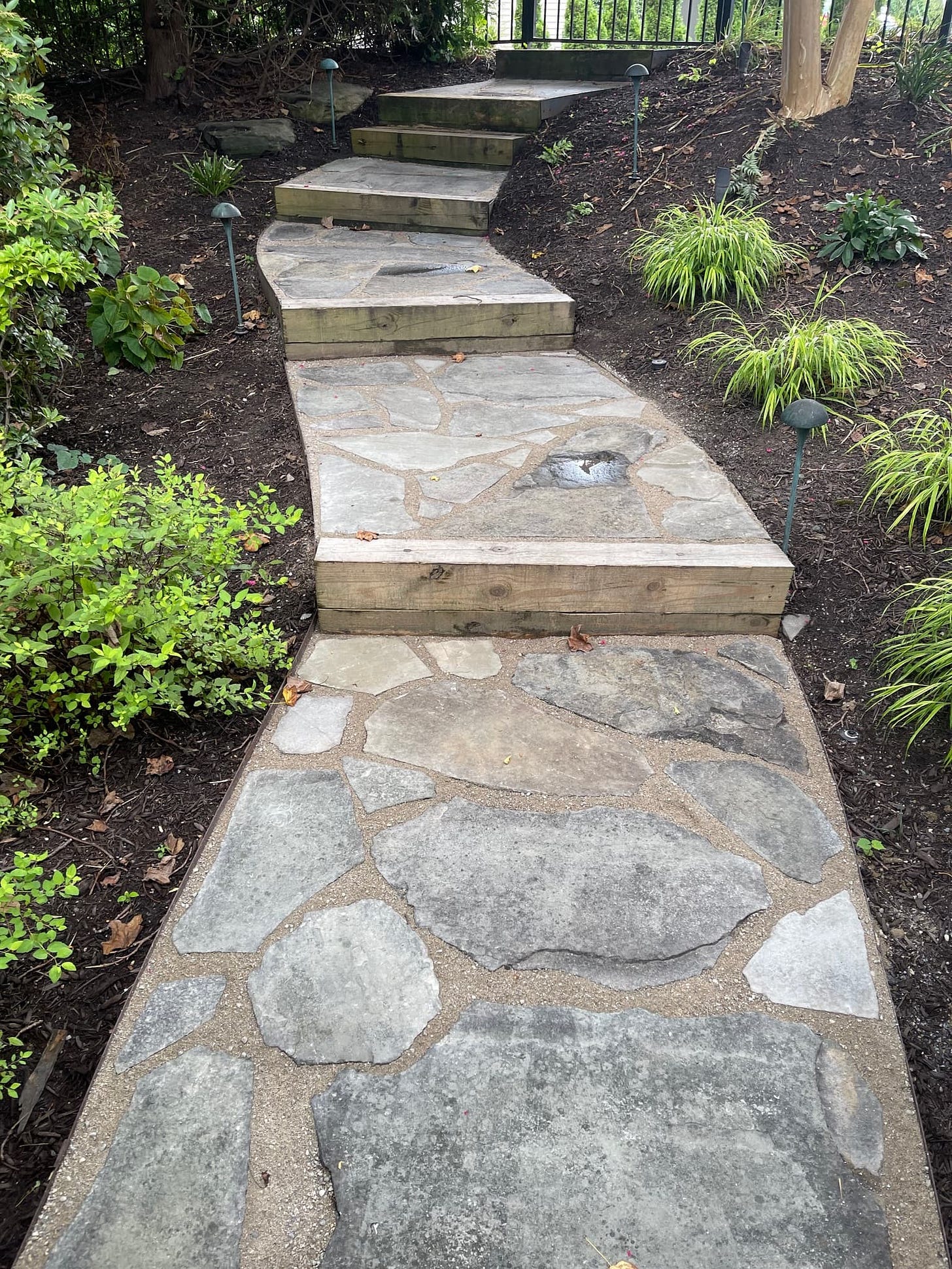
As you look down the steps, the 100-foot-tall poplar, an intimidating monstrosity of a tree, dominates the landscape. Next your eye moves to the 30-foot-tall crepe myrtle to your left at the top of the steps. The crepe myrtle is absolutely gorgeous when it blooms but is a high-maintenance annoyance the rest of the year. I didn’t know that a tree could shed until a continuous rain of tree bark began appearing in my garden. Picking up pieces of fallen bark is now a routine part of morning patrol. Shedding bark is nothing compared to the spent blossoms falling from the crepe myrtle at the end of the summer. When the blossoms rain down, they turn the entire bed on both sides of the steps to a pink color, along with my driveway, my deck, parts of my house, and my car, if I’m unlucky enough to have to drive under it when the branches are drooping after a heavy rain.
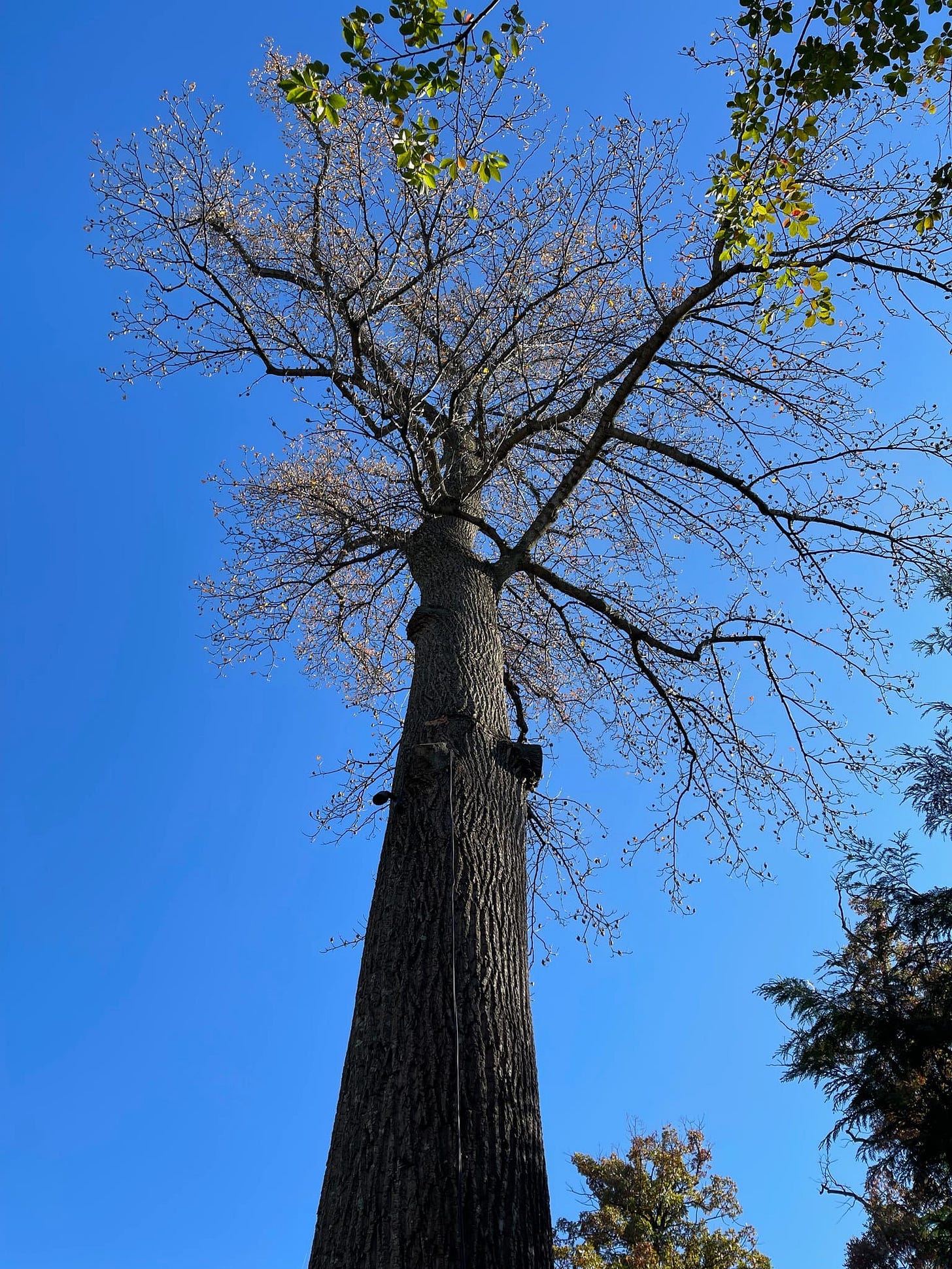

Which brings me to the perennials we’ve planted on both sides of the steps. The first thing to note is that virtually all of the plants are new. I managed to kill most of the plants that were part of the 2022 design from Sun Nurseries, and most of the replacement plants as well. The terrible thing is I don’t why most of the plants died, and the more information I get about the soil and water in this bed, the more confusing it becomes. I originally thought the main culprit was a lack of water. There is a lot of competition for water in this part of the garden considering the number of trees and bushes surrounding the bed. But I recently purchased a digital soil tester and now I’m not so sure. It shows the soil to be wet after fairly long periods of no rain, which makes me question the accuracy of the soil tester and potentially blows up my theory about plants not getting enough water. I’ll be posting on digital soil testing shortly.
The list of plants in this bed that have sacrificed themselves and gone to perennial heaven for my entertainment is long and tragic. The design originally called for five hardy begonia plants to be installed alongside the steps. After those plants died over the winter, I tried three Jacobs ladder plants, which caught my eye one day as I was wandering through Sun Nurseries. They have beautiful, variegated leaves with small blue flowers, and they like shade and well-drained soil. They seemed like a perfect fit for that part of the bed. The Jacob’s ladder lasted a little over two months. I was whining about this state of affairs to an associate at the nursery, and I ended up purchasing two more hardy begonias. So far, the plants are doing nicely, and they bloomed with several pretty white flowers in the late fall. There is one hosta plant eaten by rabbits during the summer that I’m confident will come back next spring. The other plants are white or red astilbe that I transplanted from other beds in the garden. How the astilbe will do is a mystery. I’ve transplanted them to spots in the back garden where trees and bushes create a lot of shade, and I’ve decided not to worry about them anymore until next spring. (Just a note that it IS next spring as I post this.)
The results on the other side of the steps, the left side as you look down towards the patio, haven’t been much better. As we look at this side of the bed today, the garden looks totally different than the original plan. The Japanese painted ferns that were planted around the crepe myrtle struggled so much that I moved them to a spot at the bottom of the steps next to the patio pavers. The Japanese forest grass looks great as a border next to the steps. Behind that are two Lenten roses, one of which is a replacement plant, and what turns out to be one common foxglove. Perhaps therapy will help me recall how I ended up with a foxglove in this part of the bed, but the good news is I’ve been told it’s an uncommonly healthy plant. I’m also pleased to report that the Lenten roses look healthy. One of them bloomed this spring and the other was blooming when I brought it home from the nursery. (Note: This text is referring to spring of 2023. I’ll try to limit the confusion as we make our way through spring of 2024 and I refer to the mayhem of perennial disasters in the current year.)
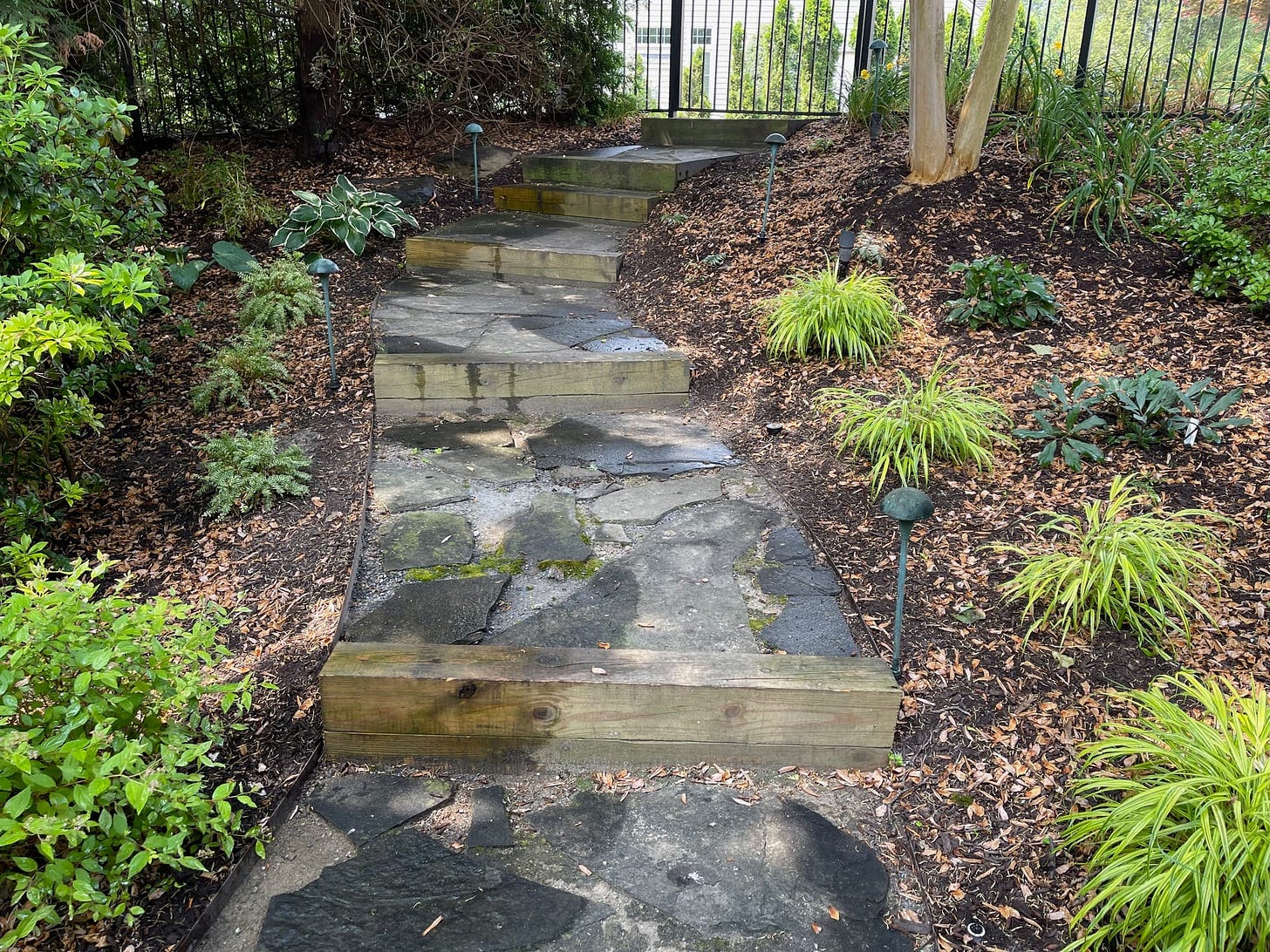
Which leads me to the plants at the top of the steps, which I’m proud to say reflect the landscaping artistry…of me. This part of the bed is my first attempt at formally designing a bed and then installing it on my own. (Not counting my puny efforts in the back bed.) Here I planted a mix of lamium, coral bells, hosta, toad lily, bleeding heart, and transplanted astilbe -- all traditional shade plants – hoping they will become part of a colorful shade garden on that side of the bed. All the plants in this part of the bed are new. How many will make it through the winter is anyone’s guess.
Based on past experience with this part of my garden, I have no reason to be optimistic about the survival rates of these new plants. I think, this time, I have the right mix of compost, topsoil, plants, sunlight, and water to make this bed an amazing entrance to the landscape below. Unfortunately for Type A’s like you and me, we have to be patient and wait to see how it turns out.
Author’s update: I’m sorry to say that the plants in the bed on the right side as you look down the steps to the patio have been badly damaged by the workers who trimmed the poplar and the arborvitae trees. The large branches from the poplar had to be pulled up the steps to the driveway, where the landscape company parked its giant woodchipper. The hardy begonia, hosta, and astilbe appear to have been destroyed, although there is always the possibility that they will come back next spring. Even worse, the carnage probably isn’t over. The workers are due back after the first frost to trim the crepe myrtle and the dogwood trees in the back yard. The crepe myrtle is surrounded by the young plants on the left side of the steps, and I have little hope that they will escape unscathed. I’m sure I can cut a deal with the landscape company to reimburse me for any further damage to the plants, but at this point, it’s more about damage to my state of mind. I really want to solve the puzzle of this part of the landscape. Getting the steps bed to be a colorful and dramatic entrance to the garden is important. Somehow starting over by buying replacement plants, even if I’ve been given the money to do it, seems like cheating.
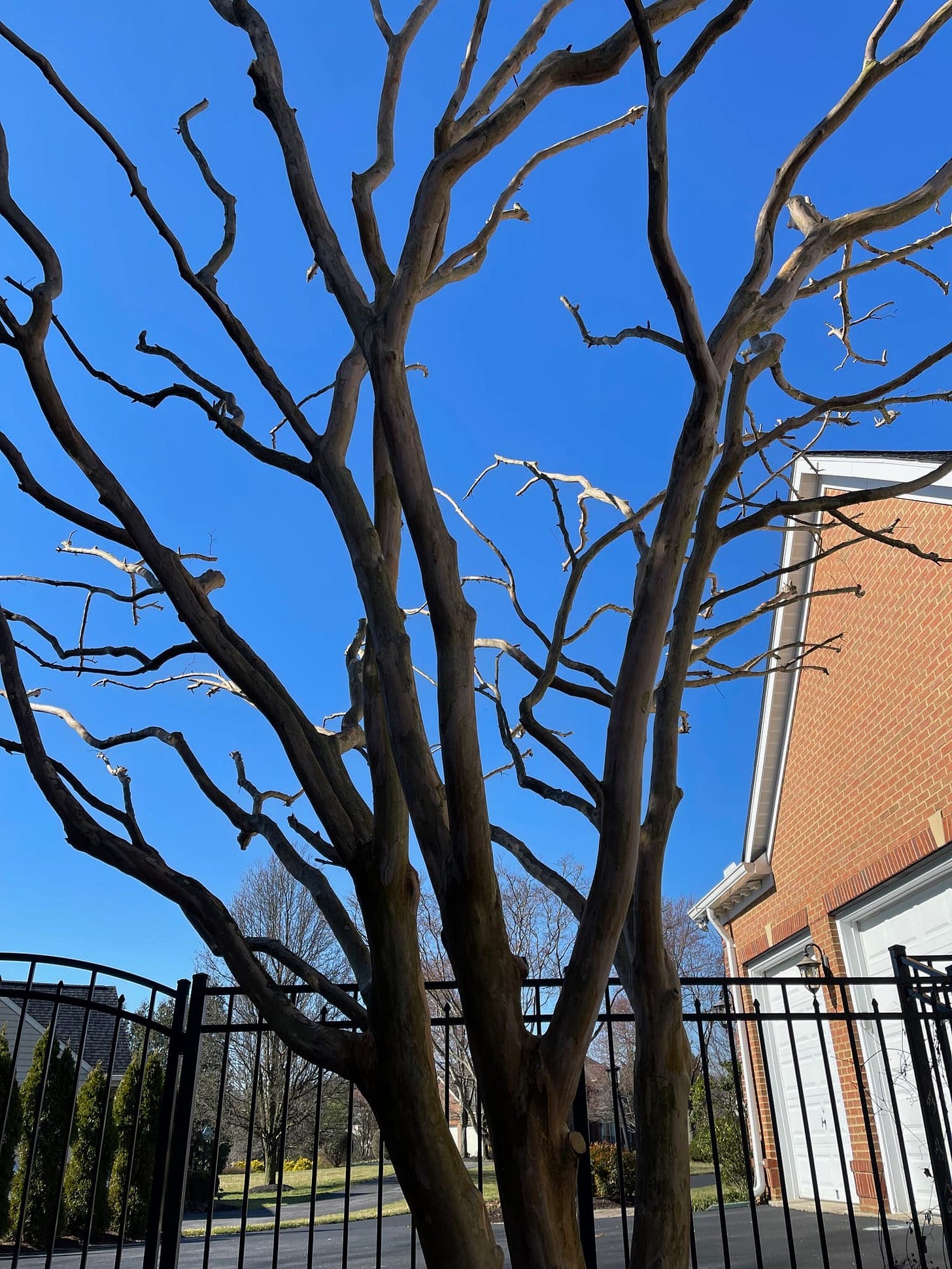
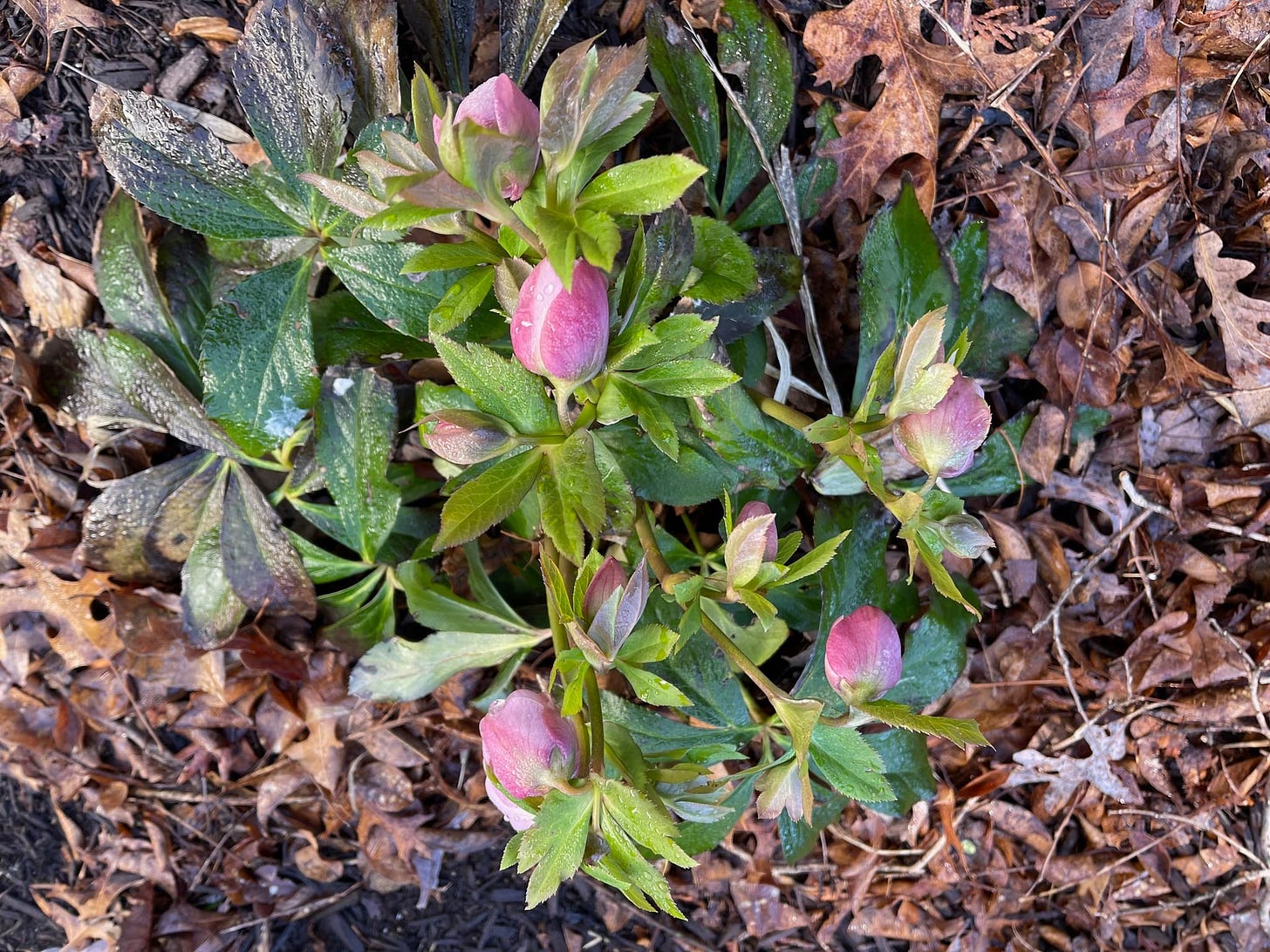
The next post is all about buying your plants from your local nursery, along with some good stories and kind words about my own local nursery. Hint: I’ll have plenty to say about plant warranties, something every beginner should pay attention to. See you next post.

